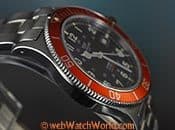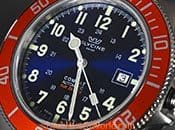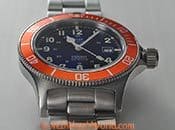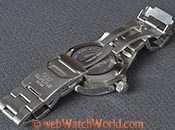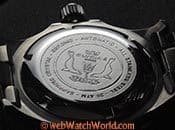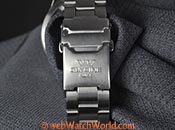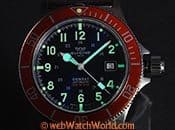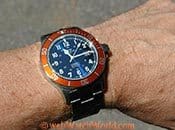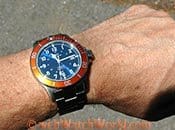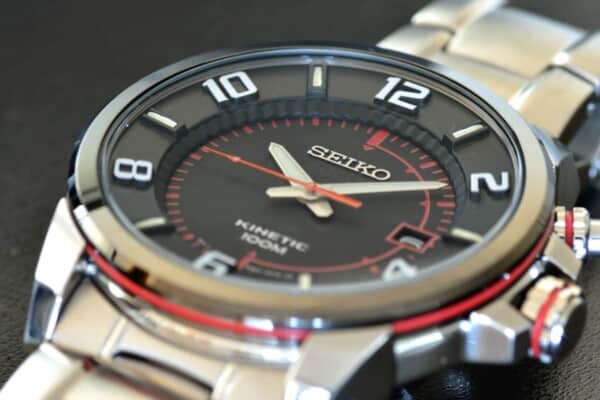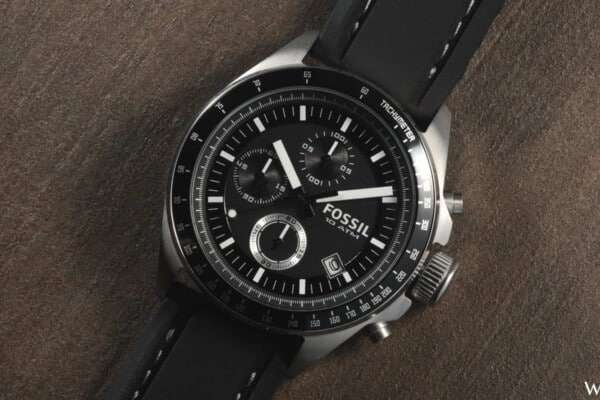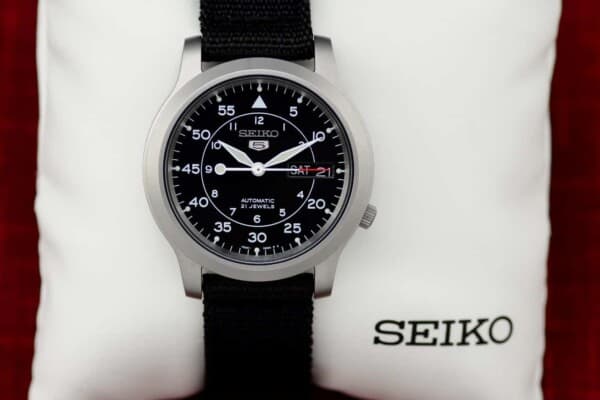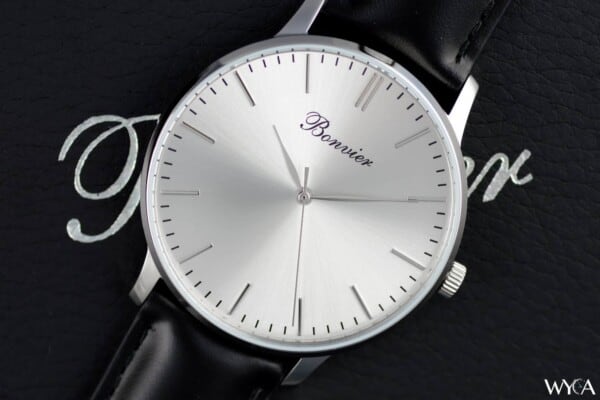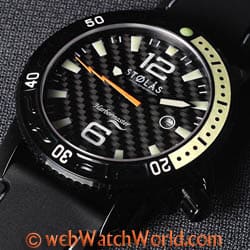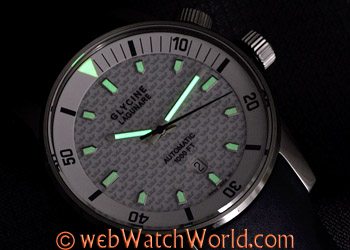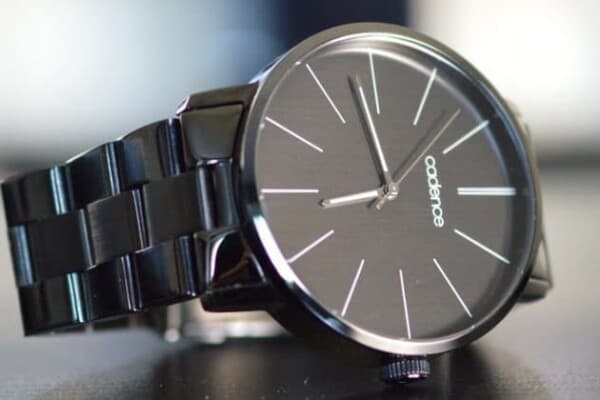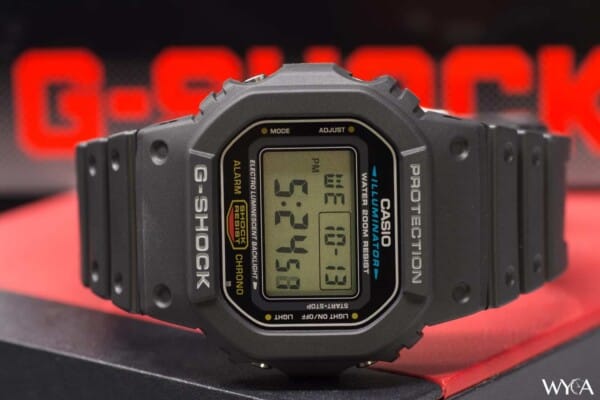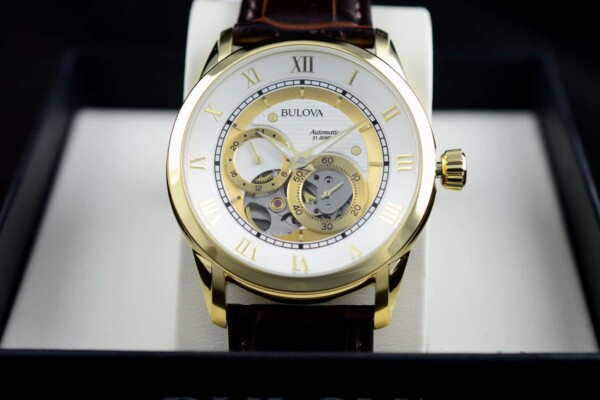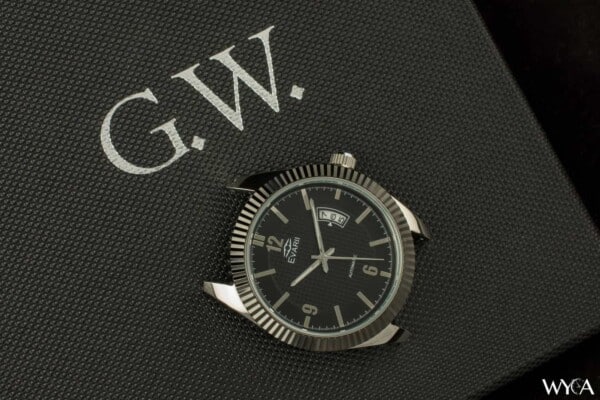Summary: The Glycine Combat Sub is a modern classic, with perfect dimensions and outstanding build quality. It’s also one of the most popular wristwatches Glycine makes and it’s available in several different color combinations and variants.
Background
The Glycine Combat Sub is one of the most popular wristwatches made by the Swiss company.
I’m not surprised, because the Combat Sub hits the “sweet spot” — or several of them — with its near-perfect dimensions, outstanding build quality and accuracy and its classic good looks.
In fact, the Combat name has been highly leveraged by Glycine, with variants including the Combat 6 and 7 Automatic, the Combat 7 Manual and Chronograph and even the Combat Iguana Quartz filling the current lineup, among others.
The Combat series changes quite frequently, with new versions being released seemingly every year.
In fact, if there’s a criticism that can be held against the company, it’s that they may be trying to exploit the Combat name just a bit too much. At some point, something more than a fresh coat of paint will be needed to freshen the lineup.
But let’s hope that the classic Combat Sub, with its crisply patterned semi-serif font, will remain forever.
The Glycine Combat Sub
I’m fairly new to the Glycine brand and I first discovered the Combat Sub about 3 years ago during a search for a sport/dress dive watch. As in “desk diver”, since the closest I’ve come to actual diving is borrowing a friend’s gear to sit in the bottom of a pool one day just for fun.
Glycine says that they first started making the Combat Sub in the 1960’s and I guess I’ll have to take them at their word. To be honest, I don’t think I’ve seen a Combat Sub that was more than about 5 years old, but who knows?
Glycine developed a sort of underground reputation with the Airman 24-hour watches back during the Vietnam war and the Combat Sub is apparently an outgrowth of the military market developed for the Airman. It’s a mainstay of the Glycine product line, although Glycine generally is not a very well known brand…at least compared to names like Seiko, Rolex, TAG Heuer and the rest of the ultra-marketed (and ultra-hyped) wristwatch names.
The basic Combat Sub design hasn’t changed much for as long as I’ve been aware of the watch, and it’s become sort of a “modern classic”. Many or most dive watches owe a lot to the Rolex Submariner design and the Combat Sub is no different; there’s a lot of similarity between the two. Not that I’m comparing the Combat Sub to the Submariner — just that the Combat Sub, along with many, many other dive watches, owes quite a bit to that classic Rolex design.
Let’s face it: if you’re designing a basic dive watch, you could do a lot worse than to pop an ETA 2824 or the like into a 40-42 mm case, throw on a sapphire crystal, a screw-in crown and a serrated bezel and call it a day. There are more similar variants out there than Crayola has crayons and some of them look close enough to the Submariner that they border on being “fake” rather than “homage”. Even the font, wording and hands are sometimes copied directly from the classic Rolex design.
I’m also not saying that the Combat Sub is one of them, because it does have some unique Glycine characteristics. And, in fact, some owners, no matter their yearly salary, would not be caught dead wearing a Rolex, simply because of the baggage that the brand carries. Enough said…
The modern Combat Sub comes in a variety of variants, with just about any color and strap combination one could think of, including the recent “Stealth” models with barely-readable contrast. But for the most part, the Combat Sub is a solid, reliable workhorse and — in the right color combination — is also very legible. And in the end, that’s what it’s all about, for if a wristwatch doesn’t immediately give up the time at a glance, it’s jewelry, in my opinion. That is it’s primary purpose, no ifs, ands or buts about it.
The blue-faced Combat Sub with white hands passes the test with flying colors.
Combat Sub Details
The Combat Sub has “perfect” dimensions for the 21st Century, in my opinion. It measures 42 mm across (not counting the crown) and it’s 10.5 mm thick. This is the “sweet spot” of modern watches — not too big, not too small. And not so thick that it won’t fit under a buttoned off-the-shelf dress shirt sleeve cuff.
It looks just as good on a 7″ wrist as it does on an 8″, although anything under or over that range may be a different story. The stainless steel case has classic proportions and the watch is rated at 20 ATM (atmospheres), which is 678 feet, according to this NOAA converter. That’s a serious dive watch in anyone’s book.
The Combat Sub shown here is the 3863.18AT O1 (or Ref. 3863) variant, which has become rather a Glycine classic version of the Combat Sub with its orange bezel and blue “anisotropic” face. When I first viewed this watch, I thought “Blue and orange? You’re kidding me, right?”. But it definitely (and quickly) grew on me and this color combination, along with the also-classic 386319AT N-D9 (black face, orange/red hands and chapter ring) are now instantly recognizable as a Glycine Combat Sub by anyone familiar with the brand.
It has the typical and expected features: a thickly-serrated screw-down crown with a big rubber O-ring gasket behind it. Don’t screw the crown too tight, because it doesn’t need it. Just use enough pressure to squash the O-ring a little bit and you’re fine.
The numbers on that orange bezel aren’t engraved, unfortunately, but the paint has held up perfectly on this example. The bezel has some subtle features you might not notice unless the owner pointed them out, such as a very slight lip to help protect the painted surface and a metal “bump” at the 12 o’clock position, to help orient the bezel in the dark. A small lume dot at that location also helps.
The very flat face of the watch is enhanced by the sapphire crystal and it helps give the Combat Sub its “readability”. The white hands on dark blue of this example provide outstanding contrast, and the very classic Glycine semi-serif font used for the numbers is stunning and one of the best and most defining features of this wristwatch.
I have never found another watch of any type, brand or cost that gives me the same thrill I get when looking at the numbers on this Combat Sub, they’re that good (other Combat Sub variants have a more modern, sans serif font that gives the watch a slightly unfinished look, in my opinion).
The “Mercedes Benz” hands may be a bit too slavishly borrowed from the Rolex design, but they do work. The minute hand is extra-long and runs right to the edge of the tiny 15-second indices between each minute mark, outlined with a slightly larger line. The Seconds hand, with its rectangular semaphore, runs exactly half-way along those indices, and this is a small but meaningful design decision that both gives this watch its professional and rich ambience while also adding to its ability to quickly give up the time to its owner.
And the hour hand, with its ball-and-arrow design (again taken from Rolex) is absolutely distinguishable from the minute and second hand, all the while pointing out the hour. It’s subtle but perfect in my book.
Lume
Glycine uses SuperLuminova on the Combat Sub watches (or most of them, anyway) and this one is about as good as it gets for that brand of lume. Of course, with the size of the numbers and indices, the lume area isn’t as great as, say, one of those Seiko Monsters. But the Combat Sub serves much better as a “dress/sport” diver than a Monster in my opinion, so the balance is there.
As for diving…well, let’s face it. Someone who is really into diving isn’t going to wear this or any other dress/sport diver; that need passed when the 1960’s faded into oblivion. If you’re diving in 2012, you’re wearing some type of digital dive computer. If you’re not, you’re probably swimming or perhaps snorkeling.
There’s just no way I can imaging anyone relying on the Combat Sub, Rolex Submariner or any of its thousands of copycat versions for true diving to a depth where it’s so dark that you’re depending on the lume. Sorry.
Case and Case Back
The Combat Sub case doesn’t really have any distinguishing characteristics; it’s a basic stainless steel case that you’ve seen a dozen (or more) times, albeit nicely made. The lugs are of average length and perhaps a bit thin, but the bracelet versions come with a nice “fill-in-the-lugs” end link that streamlines the appearance and adds to the dress/sport look. The end link appears to be hollow — I have never removed the bracelet from this one so I don’t know for sure — but the metal is of high quality and the brushed finish is consistent.
The case has a brushed finish on top with polished surfaces along the sides, another subtle touch that adds a few points to the dress factor. Granted, the orange bezel on this one subtracts a bit from that dress factor, but overall, the Combat Sub can pretty much match any dress clothes I’ll be wearing.
The case back has a nicely done Glycine logo with a pair of what appear to be dolphins, in a sort of “dolphin and anchor” arrangement with the word “Combat” underneath. Apparently this is the Combat Sub logo for marketing purposes. The text and the images appear to be acid-etched; or rather they are raised slightly against an etched background. The text and graphics are crisp — almost too much so, because they can rub away the hair on the back of the wrist, depending on your sensitivity levels. Perhaps a soft brushing with Scotchbrite would remove the sharp edges.
In typical Glycine fashion, the lugs are drilled through for the spring bars, which is a plus on the dive watch factor score chart. Glycine usually provides a tool to push through the hole to compress the spring and remove the spring bar, or a tool can be readily purchased from a watch supply company. Again, I haven’t removed the bracelet from this one and other Combat Sub versions come with what appears to be a nice Glycine rubber strap. The black-faced Combat Sub with its rubber strap looks more “business-like” than the dressier bracelet version shown here.
The case is among the thinnest you’ll find in a dive watch with this rating for sure. Due to the physics of pressure vessels, it’s very difficult to impossible to make a dive watch any thinner than this and still have it rated for any meaningful pressure resistance.
Movement and Operation
The Combat Sub yet again uses the ubiquitous ETA 2824-2 movement. The date window on the Combat Sub is at the preferred 3 o’clock position and on this version it has a white background. But in this case, the window is small enough and well placed, so the contrast to the blue face does not bother me as it does on other watches. Also, the white date window matches the white hand color.
The 2824 in this one is superbly accurate, as it is in every other Glycine watch I have owned…and I have owned many. The movement is very smooth and it can be set precisely, both due to the hacking function inherent to the 2824-2 and because the hands can be precisely pointed at a number or indice on the Combat Sub face.
I do notice that I have to offset the minute hand by about 5-10 seconds past the minute I’m setting it to, which accounts for the slight play in the minute hand. This effect is more or less noticeable on just about any hacking watch.

